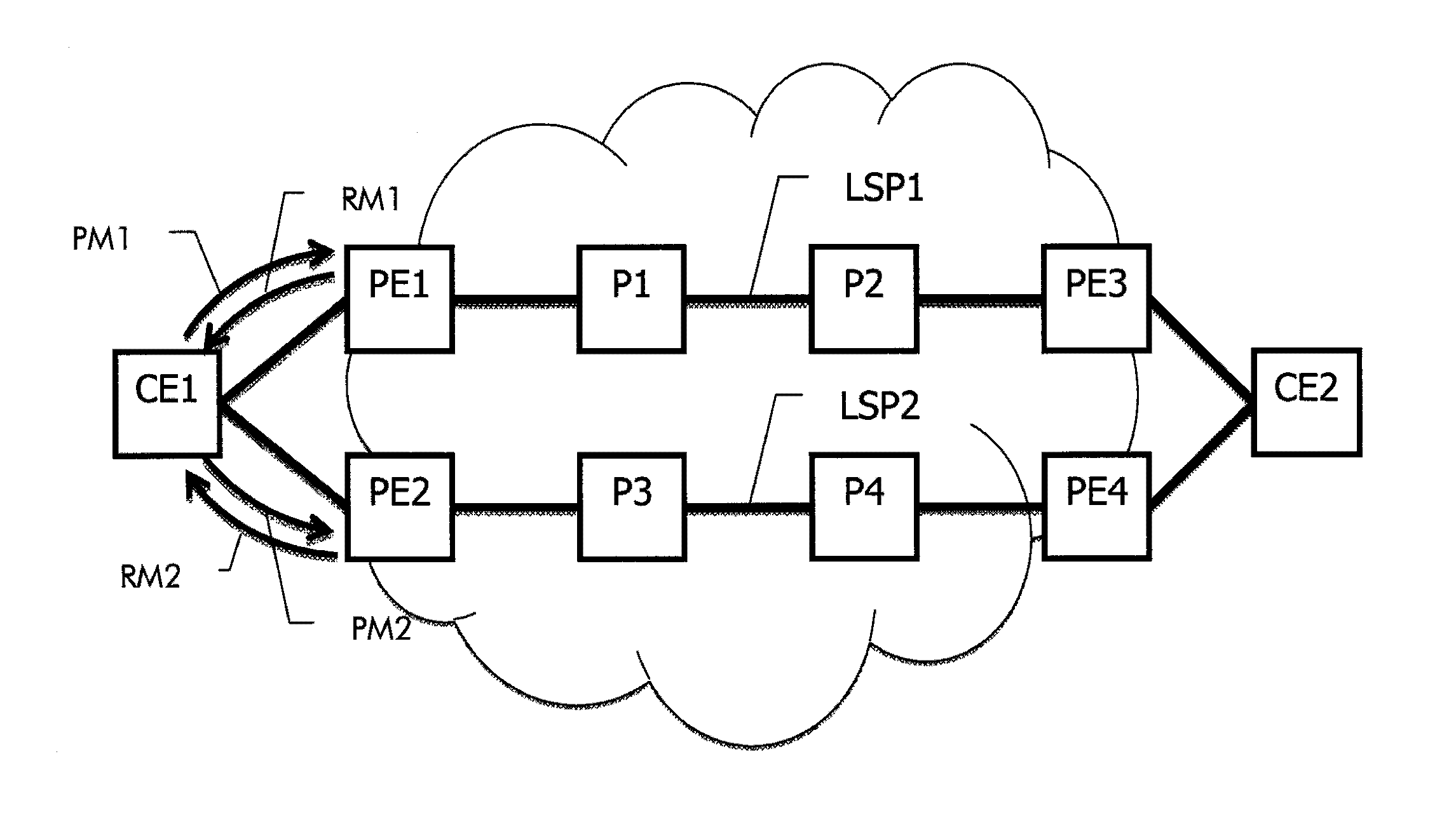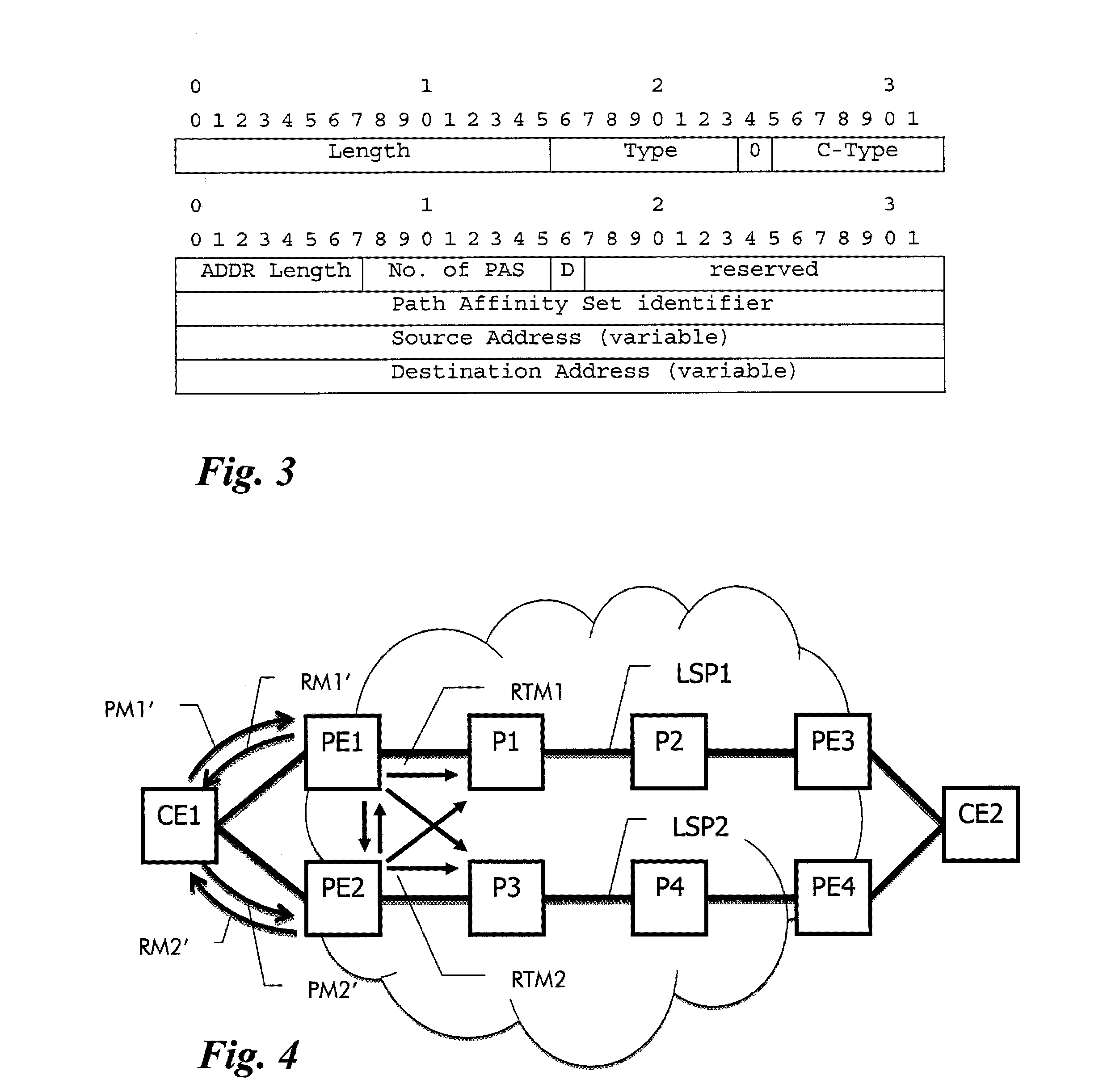Method and related apparatus for establishing link-diverse traffic paths in a telecommunications network
a technology of link-diverse traffic and telecommunications network, applied in the field of telecommunications, can solve the problems of increasing network resources, adding additional penalties to the network planning process and the network operation, and somehow restricting the solution
- Summary
- Abstract
- Description
- Claims
- Application Information
AI Technical Summary
Benefits of technology
Problems solved by technology
Method used
Image
Examples
second embodiment
[0040]The a second embodiment, it is assumed that provider SRLG IDs are either not available or not shareable (based on provider network operator policy) with the CE. For this case, a mechanism is described where information signalled to the PE on UNI messages does not require shared knowledge of provider SRLG IDs to support LSP diversity for the overlay extension model. Both approaches follow the L1VPN framework defined in RFC4847, which is incorporated by reference herein. While both methods could be implemented in the same PE network, it is likely that an L1VPN CE network would use only one mechanism at a time.
[0041]PE SRLG information can be used directly by a CE if the CE understands the context, and the CE view is limited to its L1VPN context. In this case, there is a dependency on the provider information and it is thus preferable to be able to query the SRLG in the provider network.
[0042]It may, on the other hand, be preferable to avoid this dependency and to decouple the SR...
first embodiment
[0045]The first embodiment employing an exchange of SRLG information between the PEs via the CE device will now be described in more detail.
[0046]SRLG information is defined in RFC4202 and if the SRLG information of an LSP is known, it can be used to calculate a path for another LSP that is SRLG diverse with respect to an existing LSP.
[0047]For example, CE1 in FIG. 1 may have requested an LSP1 from CE1 to CE2 via PE1 and PE3. CE1 could subsequently request an LSP2 to CE2 via PE2 and PE3 with the requirement that it should be maximally SRLG disjoint with respect to LSP1. Since PE2 does not have any information about LSP1, PE2 would need to know the SRLG information associated with LSP1. According to the embodiment, CE1 would request the SRLG information of LSP1 from PE1, and then transparently pass this information to PE2 as part of the LSP2 setup request. PE2 is therefore capable of calculating a path for LSP2 that is SRLG disjoint with respect to LSP1.
[0048]The exchange of SRLG inf...
PUM
 Login to View More
Login to View More Abstract
Description
Claims
Application Information
 Login to View More
Login to View More - R&D
- Intellectual Property
- Life Sciences
- Materials
- Tech Scout
- Unparalleled Data Quality
- Higher Quality Content
- 60% Fewer Hallucinations
Browse by: Latest US Patents, China's latest patents, Technical Efficacy Thesaurus, Application Domain, Technology Topic, Popular Technical Reports.
© 2025 PatSnap. All rights reserved.Legal|Privacy policy|Modern Slavery Act Transparency Statement|Sitemap|About US| Contact US: help@patsnap.com



